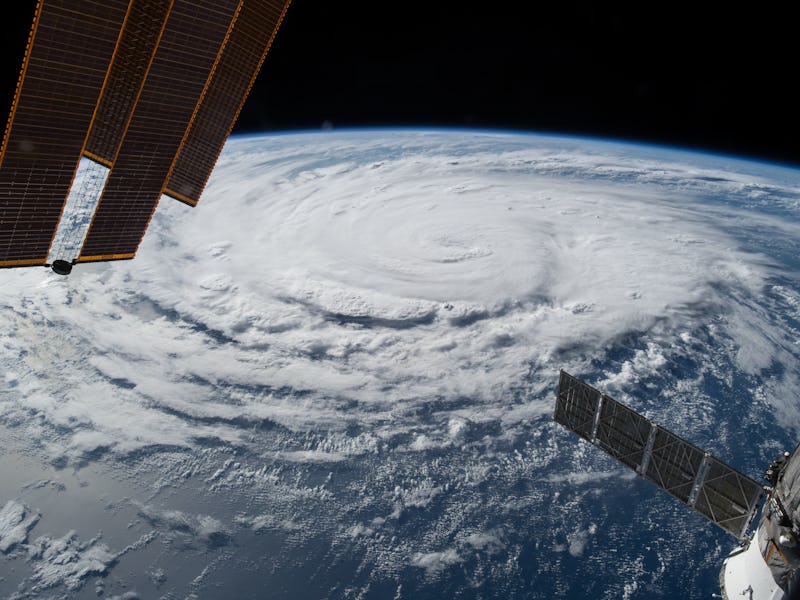NASA Just Launched a Rocket to Watch Hurricanes From Space
Keeping their eye on the storms.

NASA has sent a satellite cluster into space that will monitor the world’s deadliest storms. The agency wants to know why some hurricanes grow in intensity compared to others, and is going to use a cluster of eight microsatellites to measure wind speeds in the core of the storm.
The Cyclone Global Navigation Satellite System, known as CYGNSS, took off from the Cape Canaveral Air Force Station in Florida on Thursday, but not quite how you’d expect. A Stargazer L-1011 aircraft carrying the Pegasus rocket took off from the station, with the rocket launching once the aircraft reached around 40,000 feet. The aircraft traveled around 130 miles east of Daytona beach, in the Atlantic ocean, before the mission commenced.
“The deployments looked great — right on time,” John Scherrer, CYGNSS Project Manager at the Southwest Research Institute, said in a statement.
CYGNSS will measure key surface winds beneath the eye wall and in and near the hurricane’s core over the ocean. This is done by bouncing GPS signals off the ocean waves from four existing positioning satellites. The use of existing equipment means the microsatellites themselves only need to receive data, reducing complexity and mission costs.
The satellites will also measure inner rain bands. This is the first time NASA has been able to measure these from space, and will help predict how storms will develop. The mission is focused on storms in the topics, meaning the data will help scientists understand how hurricanes specific to that region will act.
The launch is the latest in a line of efforts from NASA to measure Earth’s climate and effectively direct scientific resources around ecological preservation. Last week, NASA revealed the GeoCARB mission, a $166 million mission spanning five years. A commercial communications satellite will measure carbon dioxide, methane, and carbon monoxide in the Americas. The project, led by the University of Oklahoma, may lead to strengthened ties with the private sector.